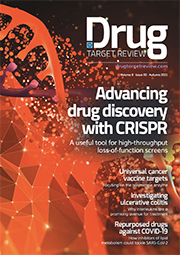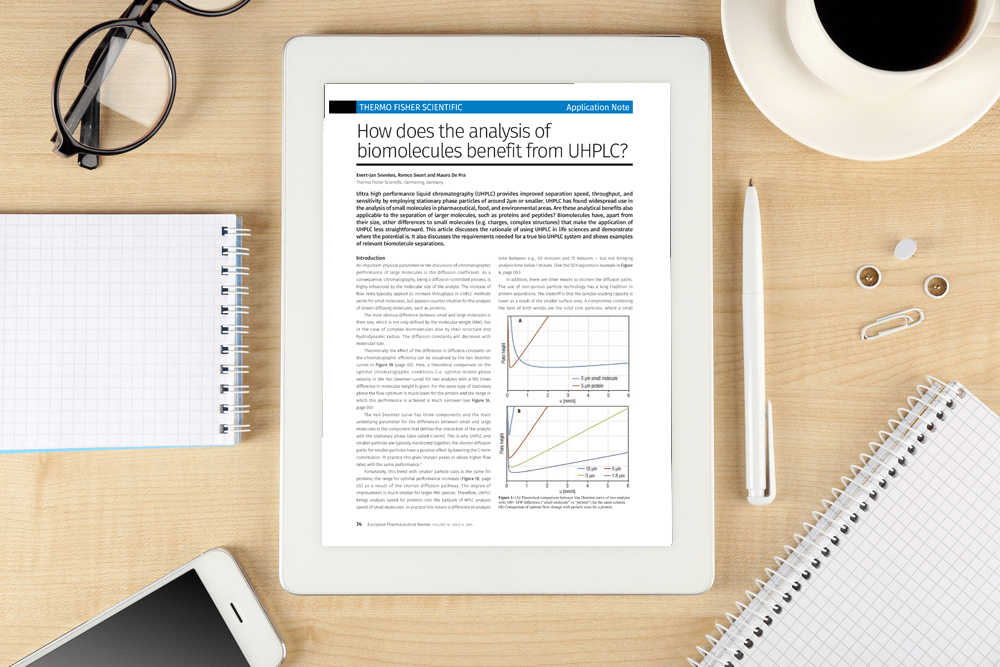App Note: How does the analysis of biomolecules benefit from UHPLC?
Posted: 11 March 2015 | Thermo Fisher Scientfic
Ultra high performance liquid chromatography (UHPLC) provides improved separation speed, throughput, and sensitivity by employing stationary phase particles of around 2μm or smaller. UHPLC has found widespread use in the analysis of small molecules in pharmaceutical, food, and environmental areas. Are these analytical benefits also applicable to the separation of larger molecules, such as proteins and peptides? Biomolecules have, apart from their size, other differences to small molecules (e.g. charges, complex structures) that make the application of UHPLC less straightforward. This article discusses the rationale of using UHPLC in life sciences and demonstrate where the potential is. It also discusses the requirements needed for a true bio UHPLC system and shows examples of relevant biomolecule separations…
Ultra high performance liquid chromatography (UHPLC) provides improved separation speed, throughput, and sensitivity by employing stationary phase particles of around 2μm or smaller.
UHPLC has found widespread use in the analysis of small molecules in pharmaceutical, food, and environmental areas. Are these analytical benefits also applicable to the separation of larger molecules, such as proteins and peptides?
Biomolecules have, apart from their size, other differences to small molecules (e.g. charges, complex structures) that make the application of UHPLC less straightforward. This article discusses the rationale of using UHPLC in life sciences and demonstrate where the potential is. It also discusses the requirements needed for a true bio UHPLC system and shows examples of relevant biomolecule separations.
An important physical parameter in the discussion of chromatographic performance of large molecules is the diffusion coefficient. As a consequence, chromatography, being a diffusion-controlled process, is highly influenced by the molecular size of the analyte. The increase of flow rates typically applied to increase throughput in UHPLC methods works for small molecules, but appears counter intuitive for the analysis of slower-diffusing molecules, such as proteins.
This application note is restricted - login or subscribe free to access


Why subscribe? Join our growing community of thousands of industry professionals and gain access to:
- quarterly issues in print and/or digital format
- case studies, whitepapers, webinars and industry-leading content
- breaking news and features
- our extensive online archive of thousands of articles and years of past issues
- ...And it's all free!
Click here to Subscribe today Login here
Related content from this organisation
- CRISPR-Cas9-based gene dropout screens: a powerful platform for drug discovery
- The diversity of synthetic biology applications
- Under the microscope: Leveraging CRISPR libraries for target discovery
- Application note: Improving and simplifying the design of knock-in experiments using the TrueDesign Genome Editor
- Better therapeutic antibodies by design
Related topics
Analysis, High-performance liquid chromatography (HPLC)
Related organisations
Thermo Fisher Scientific





